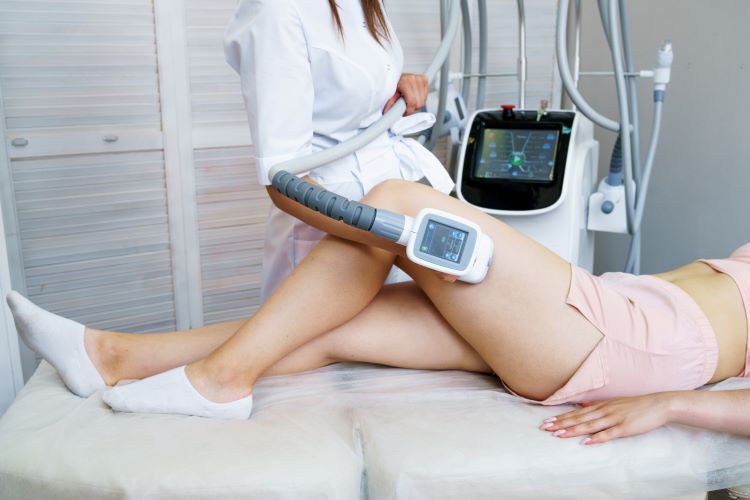Liposuction: A Comprehensive Guide to Body Contouring and Fat Removal
Liposuction is a popular cosmetic surgical procedure designed to remove excess fat deposits from specific areas of the body. This minimally invasive technique has revolutionized body contouring, offering individuals a way to achieve their desired silhouette when diet and exercise alone haven't produced the desired results. As one of the most commonly performed plastic surgery procedures worldwide, liposuction continues to evolve, providing patients with increasingly refined outcomes and shorter recovery times.

Who is an ideal candidate for liposuction?
Ideal candidates for liposuction are individuals who are at or near their ideal body weight but struggle with stubborn fat deposits that don’t respond to diet and exercise. Candidates should be in good overall health, have firm, elastic skin, and realistic expectations about the procedure’s outcomes. It’s important to note that liposuction is not a weight loss solution or a treatment for obesity. The best results are achieved in patients who have localized fat deposits and good skin elasticity, which allows the skin to conform to the new contours created by the fat removal.
What are the different types of liposuction techniques?
Over the years, several liposuction techniques have been developed to enhance results and minimize recovery time. Some of the most common methods include:
-
Tumescent liposuction: This is the most widely used technique, involving the injection of a saline solution containing lidocaine and epinephrine into the treatment area before fat removal.
-
Ultrasound-assisted liposuction (UAL): This method uses ultrasonic energy to liquefy fat cells before they are suctioned out, making the removal process easier and potentially less traumatic.
-
Laser-assisted liposuction (LAL): Also known as SmartLipo, this technique uses laser energy to break down fat cells before removal.
-
Power-assisted liposuction (PAL): This method employs a motorized cannula that vibrates rapidly, making fat removal more efficient and potentially reducing surgeon fatigue.
Each technique has its own advantages, and the choice of method often depends on the patient’s individual needs and the surgeon’s expertise.
What can I expect during the liposuction procedure and recovery?
The liposuction procedure is typically performed under local anesthesia with sedation or general anesthesia, depending on the extent of the treatment area. The surgery usually takes between one to three hours, but this can vary based on the number of areas being treated. During the procedure, the surgeon makes small incisions in the target areas and inserts the cannula to remove the excess fat.
Recovery time varies among individuals, but most patients can return to work within a few days to a week after the procedure. Swelling, bruising, and soreness are common in the treated areas and may persist for several weeks. Compression garments are often worn for a few weeks to help reduce swelling and promote skin retraction. Full results are typically visible within three to six months as the body heals and the swelling subsides.
What are the potential risks and complications of liposuction?
As with any surgical procedure, liposuction carries certain risks and potential complications. These may include:
-
Infection
-
Bleeding or hematoma formation
-
Adverse reaction to anesthesia
-
Contour irregularities or asymmetry
-
Fluid accumulation (seroma)
-
Numbness or changes in skin sensation
-
Poor wound healing
-
Skin discoloration or prolonged swelling
-
Blood clots
-
Fat embolism (rare but serious)
It’s crucial to choose a board-certified plastic surgeon with extensive experience in liposuction to minimize these risks. Additionally, following all pre- and post-operative instructions carefully can help ensure a smooth recovery and optimal results.
How much does liposuction cost, and what factors influence pricing?
The cost of liposuction can vary significantly depending on several factors, including the treatment area(s), the amount of fat to be removed, the technique used, the surgeon’s experience, and the geographic location of the practice. On average, liposuction costs can range from $2,000 to $10,000 per treatment area.
| Treatment Area | Average Cost Range |
|---|---|
| Abdomen | $3,000 - $8,000 |
| Thighs | $2,500 - $6,000 |
| Arms | $2,000 - $5,000 |
| Chin/Neck | $2,000 - $4,500 |
| Back | $2,500 - $6,000 |
Prices, rates, or cost estimates mentioned in this article are based on the latest available information but may change over time. Independent research is advised before making financial decisions.
It’s important to note that liposuction is typically considered a cosmetic procedure and is not covered by health insurance. Many plastic surgery practices offer financing options to help patients manage the cost of their procedures. When considering liposuction, it’s crucial to prioritize the surgeon’s qualifications and experience over cost alone, as the quality of results can significantly impact your satisfaction and overall health.
In conclusion, liposuction is a versatile and effective body contouring procedure that can help individuals achieve their desired physique when diet and exercise fall short. By removing stubborn fat deposits, liposuction can enhance body proportions and boost self-confidence. However, it’s essential to have realistic expectations, choose a qualified surgeon, and maintain a healthy lifestyle to ensure long-lasting results. As with any surgical procedure, careful consideration and thorough consultation with a board-certified plastic surgeon are crucial steps in determining if liposuction is the right choice for you.
This article is for informational purposes only and should not be considered medical advice. Please consult a qualified healthcare professional for personalized guidance and treatment.





